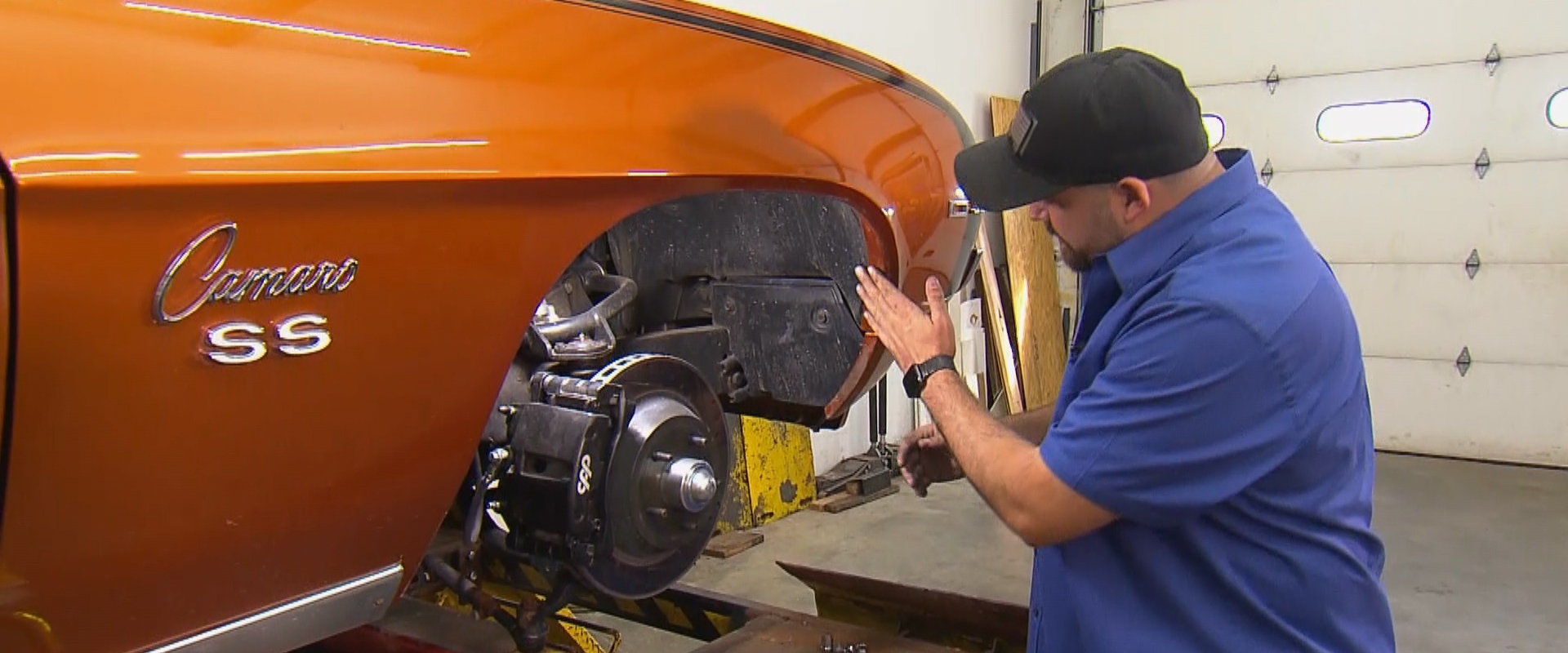Fender Rolling
Changing your vehicle’s ride height or stance can sometimes require a little extra clearance, and one trick is fender rolling. So, we brought n Dan Maffett to explain this art on MotorWeek’s “Your Drive!”
DAN MAFFETT: If you’re modifying your vehicle with bigger wheels and tires, chances are you’re going to have some clearance issues. Now, the old school way was to shove a baseball bat in the fender well and roll it back and forth until you got clearance. Well, the good thing is that the aftermarket world has evolved a lot since then. Now there’s companies making tools like this. This is a universal fender roller. And what this allows you to do is you bolt this flange against the hub of the wheel, and then you can use this wheel here and gradually massage that fender lip back.
So, this is a really cool build that we did in the past. It’s all hot rod, so when you do hot rod stuff you get hot rod problems. This has a Corvette-style coil-over suspension, so it’s sitting way lower than it was originally. Custom offset wheels; with that you get a little bit of rubbing in turning. So, what we’re going to do today is roll this inner fender so we can minimize that. And, once we get that done, we should be able to take any turn at any speed and not have any noise whatsoever. So, we’re going to get this at a workable height, because I don’t like to bend over, and we’re going to get to it.
Alright, so you can see our trouble area is going to be this space right here. Most of this is pretty flat already, but we’re going to try to get a little bit of space here. And looking at the tire, you can see where it’s been rubbing. These are witness marks that show where the tire has been coming in contact with this fender here. It’s not bad, but over time, this will chew through your tires. And they’re expensive. We don’t want to have to keep buying those, so we’re going to fix it.
Alright, so the problem area right here, we got a little bit of space behind here, and we’re going to try to just massage that back and give us the clearance we need. This is meant to work on a complete radius, so what we’re doing is just putting it in the corner, getting a lot of pressure on it and slowly rolling this back, and you’ll see the wheel will start walking….
…and that’s going to just slowly massage that area back. And we’re going to start adding some heat here, so that we make sure that we keep this nice and soft.
Cold paint is brittle. It’ll crack, it’ll splinter if you hit it. This heat gun is going to heat up all those molecules and just soften them, let them lay down, so they’re a little more pliable and we can bend them instead of stretch them or crack them.
Yeah, I think that’s really good. Yep. And we did that all thanks to an inexpensive little tool like this. So, if you have any questions or comments, hit us up right here, at MotorWeek.






